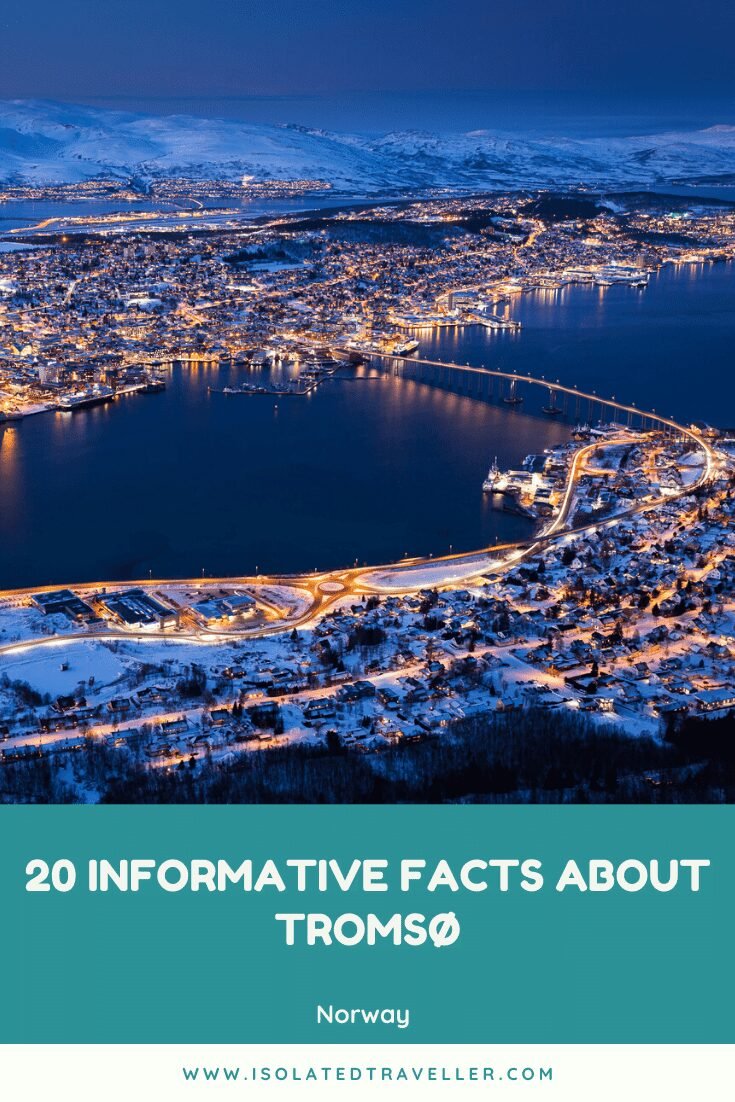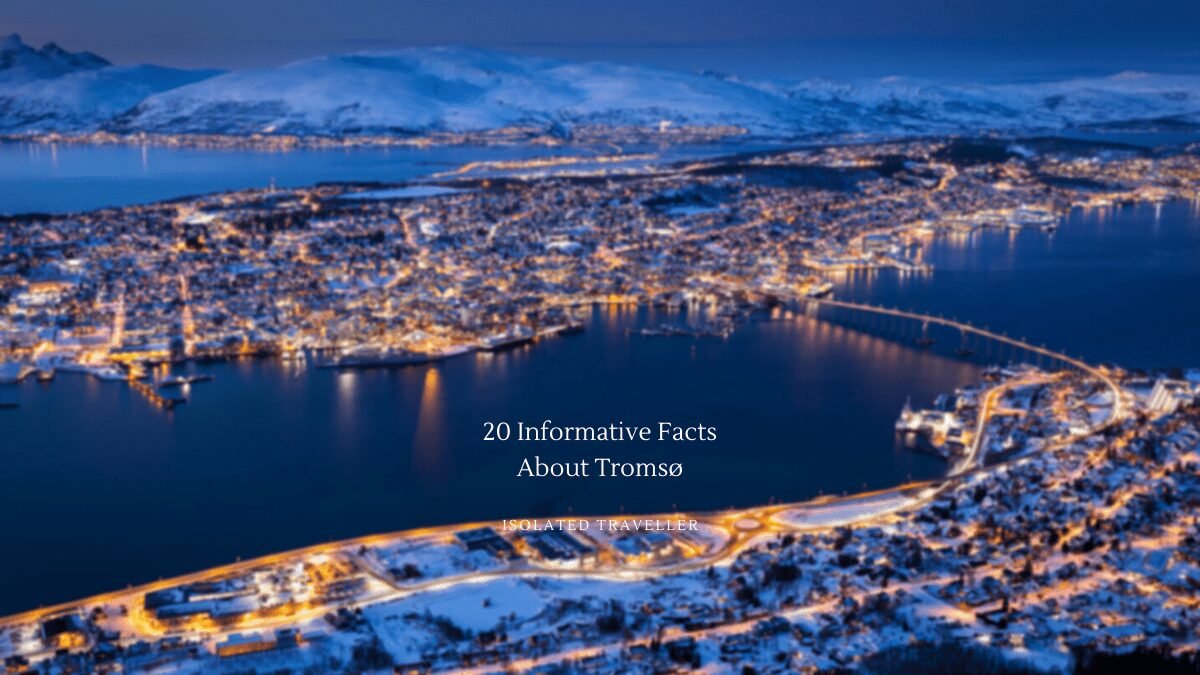Facts About Tromsø
-
The city centre of Tromsø contains the highest number of old wooden houses in Northern Norway, the oldest house dating from 1789.
-
The University of Tromsø was opened in Tromsø in 1972.
-
It is the largest urban area in Northern Norway and the third largest north of the Arctic Circle anywhere in the world
-
Tromsøya is connected to the mainland by the Tromsø Bridge and the Tromsøysund Tunnel, and to the island of Kvaløya by the Sandnessund Bridge.
-
The city of Tromsø is named after the island of Tromsøya, on which it stands.
-
The city of Tromsø was established as an independent municipality on 1 January 1838.
-
On 1 January 2020, the municipality became a part of the newly created Troms og Finnmark county, which replaced the old Troms county.
-
The coat of arms of Tromsø was devised in 1870.
-
Tromsø is twinned with: Kemi, Finland; Luleå, Sweden; Grimsby, England; Anchorage, United States; Zagreb, Croatia; Murmansk, Russia; Quetzaltenango, Guatemala; Gaza City, State of Palestine & Arkhangelsk, Russia.
-
The winter in Tromsø is not especially cold. The average January temperature is -4°C.
-
Tromsø is among the best places on earth to observe the northern lights, with a season that lasts from September throughout March.
-
Tromsø is the largest fishing port in Norway.
-
Tromsø population is 76,734 as of 2019.
-
Noted electronic musician Geir Jenssen hails from Tromsø.
-
The municipality’s population density is 30.6 inhabitants per square kilometre and its population has increased by 15.9% over the last decade.
-
The city is known for its lively night scene and a range of restaurants specialising in the fresh ingredients of the Arctic.
-
Tromsø is nicknamed the “Gateway to the Arctic”.
-
Human settlement in the Tromsø area dates back thousands of years, though the city itself was founded only about 200 years ago.
-
The University of Tromsø, founded in 1969 and home to the Centre for Sami Studies; and the Auroral Observatory, which was built in 1928 with grants from the Rockefeller Foundation and the Norwegian Polar Institute.
-
During World War II it served briefly as the seat of the Norwegian government.

Summary About Tromsø
Tromsø is a municipality in Troms og Finnmark county, Norway. The administrative centre of the municipality is the city of Tromsø. The municipality is warmer than most other places located on the same latitude, due to the warming effect of the Gulf Stream. Most of Tromsø, including the city centre, is located on the island of Tromsøya, 350 kilometres north of the Arctic Circle.
Brief History of Tromsø & More Facts About Tromsø
The area has been inhabited since the end of the ice age. Archeological excavations in Tønsvika, just outside the city limits, have turned up artifacts and remains of buildings estimated to be 9,000 to 10,000 years old.
Tromsø was not just a Norwegian outpost in an area mainly populated by the Sámi, but also a frontier city towards Russia; the Novgorod state had the right to tax the Sámi along the coast to Lyngstuva and inland to the Skibotn River or possibly the Målselv River, whereas Norway was allowed to tax areas east to and including the Kola Peninsula.
During the 17th century, while Denmark–Norway was solidifying its claim to the northern coast of Scandinavia and during this period a redoubt, Skansen, was built. Despite only being home to around 80 people, Tromsø was issued its city charter in 1794 by King Christian VII.
By the end of the 19th century, Tromsø had become a major Arctic trade centre from which many Arctic expeditions originated. Explorers like Roald Amundsen, Umberto Nobile and Fridtjof Nansen made use of the know-how in Tromsø on the conditions in the Arctic, and often recruited their crews in the city.

